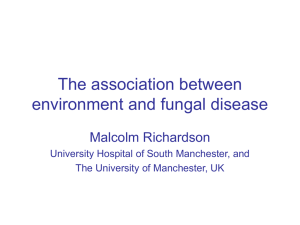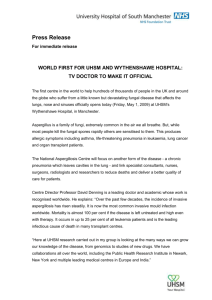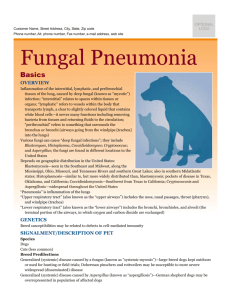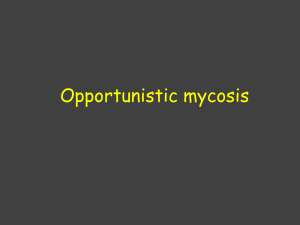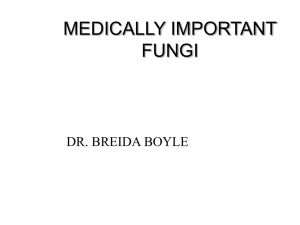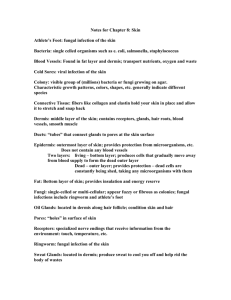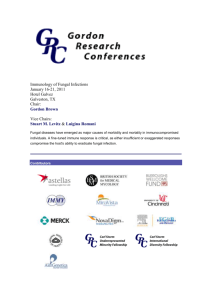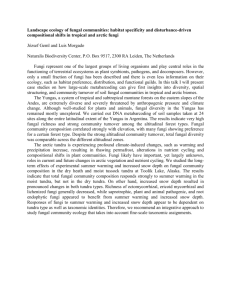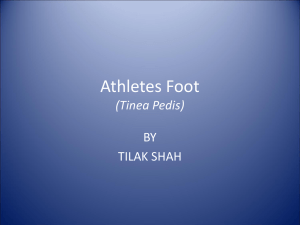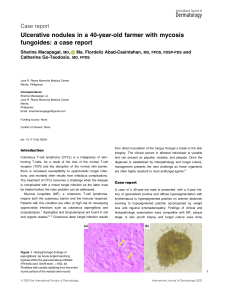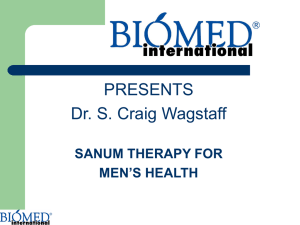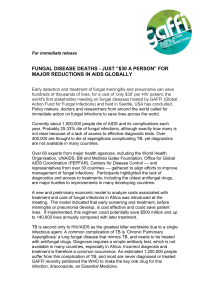See more and press release
advertisement
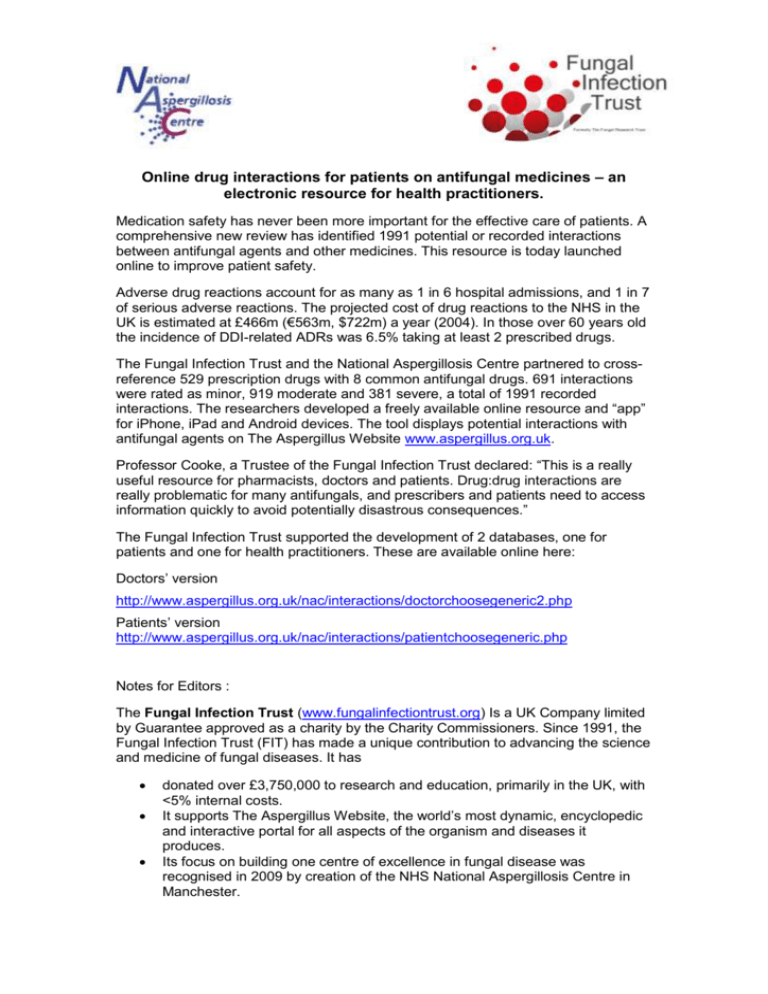
Online drug interactions for patients on antifungal medicines – an electronic resource for health practitioners. Medication safety has never been more important for the effective care of patients. A comprehensive new review has identified 1991 potential or recorded interactions between antifungal agents and other medicines. This resource is today launched online to improve patient safety. Adverse drug reactions account for as many as 1 in 6 hospital admissions, and 1 in 7 of serious adverse reactions. The projected cost of drug reactions to the NHS in the UK is estimated at £466m (€563m, $722m) a year (2004). In those over 60 years old the incidence of DDI-related ADRs was 6.5% taking at least 2 prescribed drugs. The Fungal Infection Trust and the National Aspergillosis Centre partnered to crossreference 529 prescription drugs with 8 common antifungal drugs. 691 interactions were rated as minor, 919 moderate and 381 severe, a total of 1991 recorded interactions. The researchers developed a freely available online resource and “app” for iPhone, iPad and Android devices. The tool displays potential interactions with antifungal agents on The Aspergillus Website www.aspergillus.org.uk. Professor Cooke, a Trustee of the Fungal Infection Trust declared: “This is a really useful resource for pharmacists, doctors and patients. Drug:drug interactions are really problematic for many antifungals, and prescribers and patients need to access information quickly to avoid potentially disastrous consequences.” The Fungal Infection Trust supported the development of 2 databases, one for patients and one for health practitioners. These are available online here: Doctors’ version http://www.aspergillus.org.uk/nac/interactions/doctorchoosegeneric2.php Patients’ version http://www.aspergillus.org.uk/nac/interactions/patientchoosegeneric.php Notes for Editors : The Fungal Infection Trust (www.fungalinfectiontrust.org) Is a UK Company limited by Guarantee approved as a charity by the Charity Commissioners. Since 1991, the Fungal Infection Trust (FIT) has made a unique contribution to advancing the science and medicine of fungal diseases. It has donated over £3,750,000 to research and education, primarily in the UK, with <5% internal costs. It supports The Aspergillus Website, the world’s most dynamic, encyclopedic and interactive portal for all aspects of the organism and diseases it produces. Its focus on building one centre of excellence in fungal disease was recognised in 2009 by creation of the NHS National Aspergillosis Centre in Manchester. It has supported the training of over 25 researchers and practitioners and the publication of over 180 research reports on fungi and disease. It has supported LIFE (Leading International Fungal Education) which provides a global accessible resource for health professionals on all fungi, and the UK’s first student art competition focused on fungi and fungal disease. Over recent years there has been an increasing focus on supporting patients and carers with fungal infection, partly through the Patients Website, its associated online community and partly through the National Aspergillosis Centre patient meetings. The Aspergillus Website (www.aspergillus.org.uk) was set up in 1998 by the Fungal Infection Trust. It is the most comprehensive source of information about Aspergillus and the diseases it causes available on the internet. An estimated 75,000 distinct IP addresses log on monthly and over 200,000 other websites link to the Aspergillus Website. Well over 70% of users in any month are new visitors from over 125 countries. Over 1000 patients are currently registered with the support discussion group on Yahoo! and another 150 on Facebook with 280 LinkedIn members (Aspergillus and Aspergillosis Group). LIFE is the international health professional education brainchild of the Fungal Infection Trust. LIFE’s goal is to improve the health of patients suffering from serious fungal nfections primarily through health professional education and increased awareness internationally (www.LIFE-Worldwide.org). Summary information on fungi, fungal diseases, diagnostic tests and treatments are provided free in English and in Spanish. The National Aspergillosis Centre (www.nationalaspergillosiscentre.org.uk) is the UK’s referral clinic for patients with chronic pulmonary aspergillosis and related conditions. It was established 5 years ago and is housed at the University Hospital of South Manchester and funded through the National Health Service Specialised Services. References: 1. Pirmohamed M et al (2004). Adverse drug reactions as cause of admission to hospital: prospective analysis of 18,820 patients. BMJ; 329; 15-19 2. Raschetti R, Morgutti M, Menniti-Ippolito F, Belisari A, Rossignoli A, Longhini P, et al. (1999) Suspected adverse drug events requiring emergency department visits or hospital admissions. Eur J Clin Pharmacol 54(12):959–963. Although the frequency of drug-drug interactions leading to a visit to the Emergency Department was small (3.8%), this type of event was more severe, because most of these patients were hospitalized. 3. Grymonpre RE, Mitenko PA, Sitar DS, Aoki FY, Montgomery PR (1988) Drugassociated hospital admissions in older medical patients. J Am Geriatr Soc 36: 1092-1098. 4. Miranda V, Fede A, Nobuo M, Ayres V, Giglio A et al. (2011) Adverse drug reactions and drug interactions as causes of hospital admission in oncology. J Pain Symptom Manage 42: 342-353. doi:10.1016/j.jpainsymman.2010.11.014. From September 2007 to May 2008, there were 550 hospital admissions and 458 were eligible. Among unplanned admissions (n=298), 39 (13.0%, 95% confidence interval [CI] 9.4%-17.4%) were considered to be associated with an ADE, 33 (11.0%, 95% CI 7.7%-15.2%) with an ADR, and six (2.0%, 95% CI 0.7%-4.3%) with a DDI McDonnell PJ, Jacobs MR (2002) Hospital admissions resulting from preventable adverse drug reactions. Ann Pharmacother 36: 1331-1336. doi:10.1345/aph.1A333. RESULTS: Over 11 months, 158 ADRs were directly related to hospital admission. The relationship of these admissions to drug exposure was determined to be probable or highly probable in 154 (97.4%) of these cases. From this group, 96 (62.3%) of these events were considered potentially preventable, with 23 (24%) considered severe to life-threatening. Characteristics associated with these ADRs included documentation of a toxic drug concentration or abnormal laboratory value (80%), inadequate monitoring of a patient's drug therapy (67%), inappropriate dose (51%), patient noncompliance (33%), drug-drug interaction (26%), contraindication to therapy (3%), and documented allergy (1%). These ADRs resulted in 595 hospital days, with an average length of stay of 6.1 days. 5. Shad MU, Marsh C, Preskorn SH (2001) The economic consequences of a drug-drug interaction. J Clin Psychopharmacol 21: 119-120. doi:10.1097/00004714-200102000-00027. 6. Ernst FR, Grizzle AJ (2001) Drug-related morbidity and mortality: updating the costof-illness model. J Am Pharm Assoc (Wash) 41: 192-199. 7. Roger J. M. Brüggemann1,4, Jan-Willem C. Alffenaar5, Nicole M. A. Blijlevens2,4, Eliane M. Billaud6, Jos G. W. Kosterink5, Paul E. Verweij3,4, David M. Burger1,4, and Louis D. Saravolatz (2009) Clinical relevance of the pharmacokinetic interactions of azole antifungal drugs with other coadministered agents. Clin Infect Dis. 48 (10): 1441-1458. 8. Systematic review (ADRs) www.sciencedirect.com/science/article/pii/S1319016413000509
